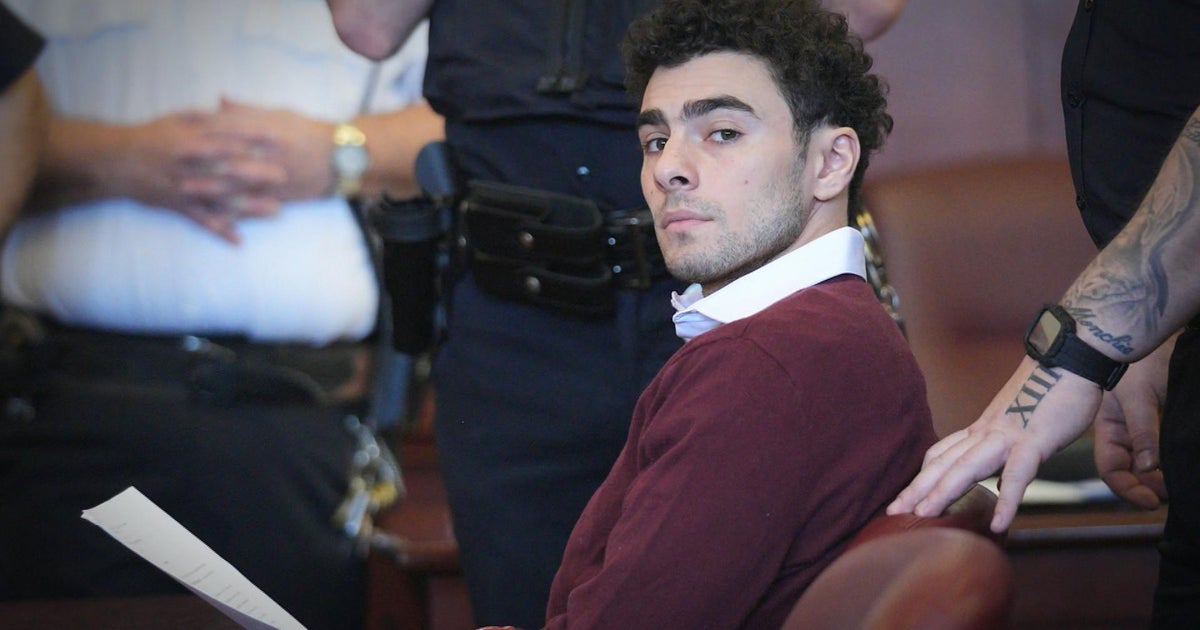Thousands of Victorians with profound disabilities face the prospect of eviction from their group homes and the loss of carers they have relied on for years due to a funding stand-off between private providers, the state and the federal government.
Almost 60 Victorian supported independent living homes caring for the state’s most vulnerable residents have been closed in the past 2½ years, and the not-for-profit organisations appointed to take over the state’s disability accommodation sector eight years ago have confirmed they are now operating with only one month’s cashflow.

Cheryl Soafkin and her 37-year-old son, Jeremy, who lives with severe autism. For 17 years Jeremy has lived in a disability group home in Camberwell, which will soon be closed by its operator, Scope.Credit: Photograph by Chris Hopkins
Disability workers, advocates, unions and housing providers say the situation will become a crisis on January 1, when Victorian government grants intended to transition the state’s group homes onto the National Disability Insurance Scheme ends, and the viability of homes for 1985 residents “hits a cliff”.
In response to questions from this masthead, heads of the five not-for-profit organisations appointed to take over Victoria’s former government-run disability group homes – Aruma, Scope, Life Without Barriers, Melba Support Services and Possability – issued a joint statement confirming that funding shortfalls were affecting their ability to continue current services.
Aruma chief executive Dr Martin Laverty, who helped design the NDIS and served on the National Disability Insurance Agency (NDIA) board from 2013 to 2019, said underfunding for individual residents by the NDIA and the ending of the Victorian government grants endangered many services for the most vulnerable residents.
“There’s been some really heartbreaking decisions that not-for-profit organisations have had to make to close services that are simply no longer viable,” Laverty said.
“There have been dozens of closures across Victoria in recent months, and there are tragically more to come. These closures of services are disruptive for residents and really challenging for families and loved ones who are given few options to find other alternatives.
“It’s reached the point that the viability of not-for-profit registered providers has become so fragile that, on average, there is less than one month’s liquidity or one month’s cash, which is well below the safe level.”
Almost 5000 disabled Victorians live in supported independent living homes across the state, and all receive individual NDIS funding. This includes 1985 residents in homes that were formerly operated by the state government. The rest are in homes owned and run by private businesses.
Loading
In line with the creation of the NDIS, the Victorian government began transitioning from institutionalised care to more personalised group homes, completing the process with the 2019 closure of Colac’s Colanda Residential Services.
While the Victorian government still owns most of the homes, it progressively handed control of their day-to-day running to the five private providers from 2016. Because the state-run homes provide a higher standard of care, staff wages and conditions demanded by enterprise agreements than is covered by the NDIS, the Victorian government agreed to provided $2.1 billion in subsidies to cover the costs for eight years while they transferred.
Those subsidies are due to end on December 31, and with 59 of the group homes already closing with little notice for their residents, the Health and Community Services Union has raised concerns about an “impending crisis”.
The union’s Victorian branch secretary, Paul Healey, said that unless urgent action was taken, the ripple effect would hit the entire Victorian disability accommodation sector.

Cheryl Soafkin is desperately trying to find a suitable new home for her son Jeremy, 37, while trying to shield him from the crisis facing the disability home sector.Credit: Photograph by Chris Hopkins
“Five thousand of Victoria’s most vulnerable people will potentially be left homeless without services, without support, and will be thrust out of the homes they have had for a long time because of the failures of the NDIS and the state government,” Healey said.
“The Victorian government simply cannot absolve themselves of their responsibility to Victorian participants, families and the disability workforce.
“It is not good enough to say that this is a federal issue. We have a long and proud history of providing quality care to participants, and the answer cannot be that disability workers lose a third of their wages and conditions, participants lose the quality care they deserve and families are beside themselves with worry.”
The union, group home providers and governments have been engaged in crisis talks to address the issue, but with only three months remaining before the state funding ends, no agreement has been reached.
Loading
Speaking on behalf of the five appointed providers, Laverty said the current NDIS plans covered only 95 per cent of the costs needed to care for a resident in a group home setting. He said the rush to place the most profoundly disabled residents on the NDIS when the scheme began meant many were also funded at a much lower level than their needs, further widening the gap between payments and running costs.
Those clients include many of the state’s most vulnerable residents, many of whom have complex issues such as a reliance on ventilators to breathe, severe epilepsy, dysphagia, leaving them at risk of choking, and constant catheter management.
He said the five not-for-profit providers had already endured three straight years of deficits and, while the Victorian government’s transition grants had helped paper over the cracks for 1985 residents living in hundreds of state-owned homes, the end of the subsidies on December 31 would push many homes over the edge of a cliff.
“It’s been known for the last 7½ years that when those arrangements end ... a number of protected positions that are entrenched in enterprise agreements become unfunded from the first of January, and this is well known,” he said.

Aruma chief executive Dr Martin Laverty said NDIS payments did not cover the costs of caring for supported independent living home residents, placing pressure on the sector.Credit: Tracey Nearmy
“The last thing we need is to get to the end of the year and see that the high-intensity needs of residents of the former Victorian government homes remain unfunded by the NDIA, and that’s why, with some urgency, we are seeking a response from the NDIA.”
In July, disability accommodation provider Annecto collapsed amid financial issues, while Bedford, which operated group homes in South Australia, entered voluntary administration. last week, Queensland’s Centrecare said it was ceasing its NDIS-funded services, affecting 700 clients and residents.
A National Disability Insurance Agency spokesperson said the agency continued to work with Victorian supported independent living providers to ensure participants received the supports they required.
“The NDIA has processes in place to manage participant safety if their providers cease services, particularly for participants in supported living,” the spokesperson said.
Loading
“If required, specialist NDIA teams can help affected participants transfer to new [supported independent living] and specialist disability accommodation providers.”
NDIS Minister Jenny McAllister did not address the shortfall directly but said the Albanese government was taking active steps to support the viability of providers and strengthening the NDIS market.
“This includes $45 million in funding to support quality providers of disability services in supported independent living, therapy supports and support co-ordination,” she said.
Jeremy, 37, is facing eviction from the Camberwell group home he has lived in for 17 years and shares with two other residents. In July, its operator, Scope, told Jeremy’s mother, Cheryl Soafkin, it would have to close the home in three to six months.
Since then, she has met four other disability housing providers and spoken to many more, trying to convince them to take over the operation of Jeremy’s home or to find him somewhere suitable to live, without letting Jeremy know the extent of the situation because of the distress it would cause.
“It’s going to be difficult for him, very difficult ... but he doesn’t realise the magnitude of it,” Soafkin said.
“We would really like Jeremy to stay at the house, though it’s not for want of searching for other houses. But these are people, and you can’t just shove somebody into a house where there are other residents and he would just be an inappropriate match.
“In the old days, you just worked with the state government and they provided the care, and they had control over the vacancy list. It wasn’t perfect by any means, but you weren’t dealing with a million different bureaucracies.”
Victorian Disability Minister Lizzie Blandthorn was asked about the December 31 timeline by Legalise Cannabis MP David Ettershank last month. She said independent living services were ultimately funded by the NDIS.
“We are continuing to work with the Commonwealth and other states and territories to ensure that the recommendations of the NDIS are implemented,” she said.
A recent review of the NDIS scheme made recommendations about attracting and training a workforce able to handle its need, and found there were “large and persistent” workforce shortages in the current policy settings, limiting access to support for some participants and pressuring staff.
A Victorian government spokesperson said it continued to advocate to the Commonwealth that NDIS plans should be properly funded to match the supports of those who need them.
“Every Victorian has the right to live with dignity and respect,” the spokesperson said. “Over and above our annual contribution of $3.2 billion to the NDIS, we continue to support initiatives to strengthen inclusion of people with disability in all our services.”
Start the day with a summary of the day’s most important and interesting stories, analysis and insights. Sign up for our Morning Edition newsletter.
Most Viewed in National
Loading


















































